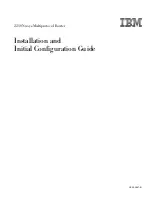
interface eth-trunk
trunk-id
The Eth-Trunk interface view is displayed.
3.
Run:
load-balance
{
dst-ip
|
dst-mac
|
src-ip
|
src-mac
|
src-dst-ip
|
src-dst-
mac
}
A load balancing mode is configured for the Eth-Trunk.
By default, the load balancing mode of a Layer 3 Eth-Trunk is
src-dst-ip
.
Eth-Trunk member interfaces use flow-based load balancing. The local and remote
ends can use different load balancing modes, without affecting each other.
----End
2.6.1.6 Checking the Configuration
Procedure
l
Run the
display eth-trunk
[
trunk-id
[
interface
interface-type
interface-number
|
verbose
] ] command to check the Eth-Trunk configuration.
l
Run the
display trunkmembership eth-trunk
trunk-id
command to check information
about Eth-Trunk member interfaces.
l
Run the
display trunk resource
command to check Eth-Trunk resources that have been
used on a device.
----End
2.6.2 Configuring Link Aggregation in LACP Mode
Link aggregation implements load balancing, increases bandwidth, and improves transmission
reliability.
2.6.2.1 Creating an Eth-Trunk
Context
Eth-Trunks increase bandwidth and improve transmission reliability. You can configure Layer
2 and Layer 3 Eth-Trunks based on network applications.
Procedure
l
Create a Layer 2 Eth-Trunk.
1.
Run:
system-view
The system view is displayed.
2.
Run:
interface eth-trunk
trunk-id
A Layer 2 Eth-Trunk is created.
Huawei AR530&AR550 Series Industrial Switch Routers
Configuration Guide - Ethernet Switching
2 Link Aggregation Configuration
Issue 01 (2014-11-30)
Huawei Proprietary and Confidential
Copyright © Huawei Technologies Co., Ltd.
47
















































